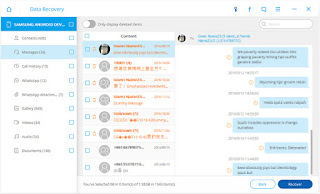What is Multi Multi cloud?
Multi-Multi cloudis a Multi cloud architecture that is composed of multiple Multi cloud services provided by multiple Multi cloud providers. It can be either a public Multi cloud or a private Multi cloud.
For example, your business investment extends a certain Multi cloud infrastructure. You have moved from bare metal servers to virtualization-based workloads, and now you are evaluating public Multi cloud solutions with only one goal, which is to provide support for a specific, customer-oriented application that fluctuates in utilization. After some research, you have found a public Multi cloud provider that offers service level agreements (SLAs), security agreements, and normal working hours that are suitable for hosting your custom applications. You are satisfied with your choice. But in the end, customers start asking you to provide features that can only be achieved through another vendor’s proprietary application. To integrate these functions into your custom application, you not only need to purchase the vendor’s application, but also host it in its private public Multi cloud (a solution that allows both applications to scale on demand) This app.
This became Multi Multi cloud.
What is the difference between multi-Multi cloud and hybrid Multi cloud?
Multi-Multi cloud refers to deploying the same type of Multi cloud solution (public Multi cloud or private Multi cloud) on multiple vendors. Hybrid Multi cloud refers to the combination of multiple Multi cloud deployment types (public Multi cloud or private Multi cloud) through integration or orchestration.
A multi-Multi cloud solution may involve 2 public Multi cloud environments or 2 private Multi cloud environments. Hybrid Multi cloud solutions may involve a public Multi cloud environment and a private Multi cloud environment, as well as an infrastructure (implemented by application programming interfaces, middleware, or containers) that helps achieve workload portability.
These Multi cloud solutions are mutually exclusive, so you cannot deploy at the same time, because these Multi clouds are either interconnected (hybrid Multi cloud) or not (multi-Multi cloud). More and more enterprises choose multi-Multi cloud deployment (including public Multi cloud and private Multi cloud), hoping to expand more environments to improve security and performance.
Management and automation of multi-Multi cloud environments
IT is becoming more and more variable, relying more and more on internal and external virtual infrastructure. This makes matters of self-service, supervision and compliance, resource management, financial control, and capacity planning very complicated. Multi cloud management and automation tools help to maintain greater visibility and better supervision of these different resources.
The application of automation technology in enterprises has always been scattered, and different teams have used different tools for their respective management fields. However, today's automation technologies, such as the Red Hat® Ansible® Automation Platform, can automate assets across the entire environment. Introducing modern automatic functions into a multi-Multi cloud environment can not only prevent the environment from becoming more and more complicated, but also improve the workload security and performance of traditional and Multi cloud-native applications.
When enterprises choose public Multi cloud providers, Linux® containers can provide enterprises with one more choice. Because containers can encapsulate applications and separate the contained applications from the entire runtime environment, users can move these applications between multiple Multi clouds at will and retain all functions. This allows companies to freely choose public Multi cloud providers based on common criteria (such as uptime, storage space, cost), rather than based on whether the provider supports your workload (or cannot provide support due to proprietary restrictions) choose.
This portability can be achieved through microservices. Microservices are an architecture and method for building software. In microservices, applications are split into the smallest components and are independent of each other. For applications based on microservices, containers (ie Linux) are the ideal place to run. The combination of the two is the key to migrating your application to any Multi cloud.


Comments
Post a Comment